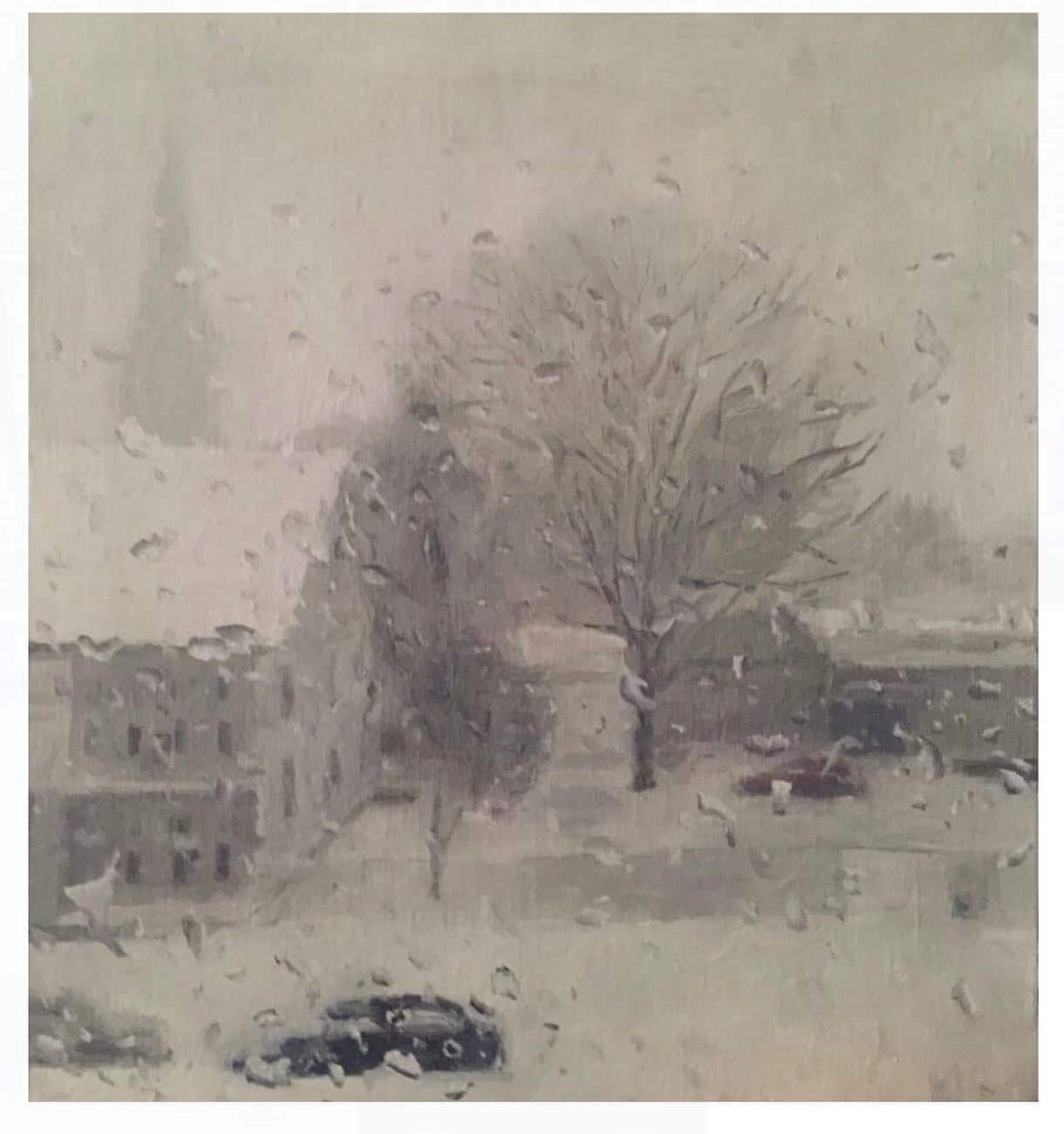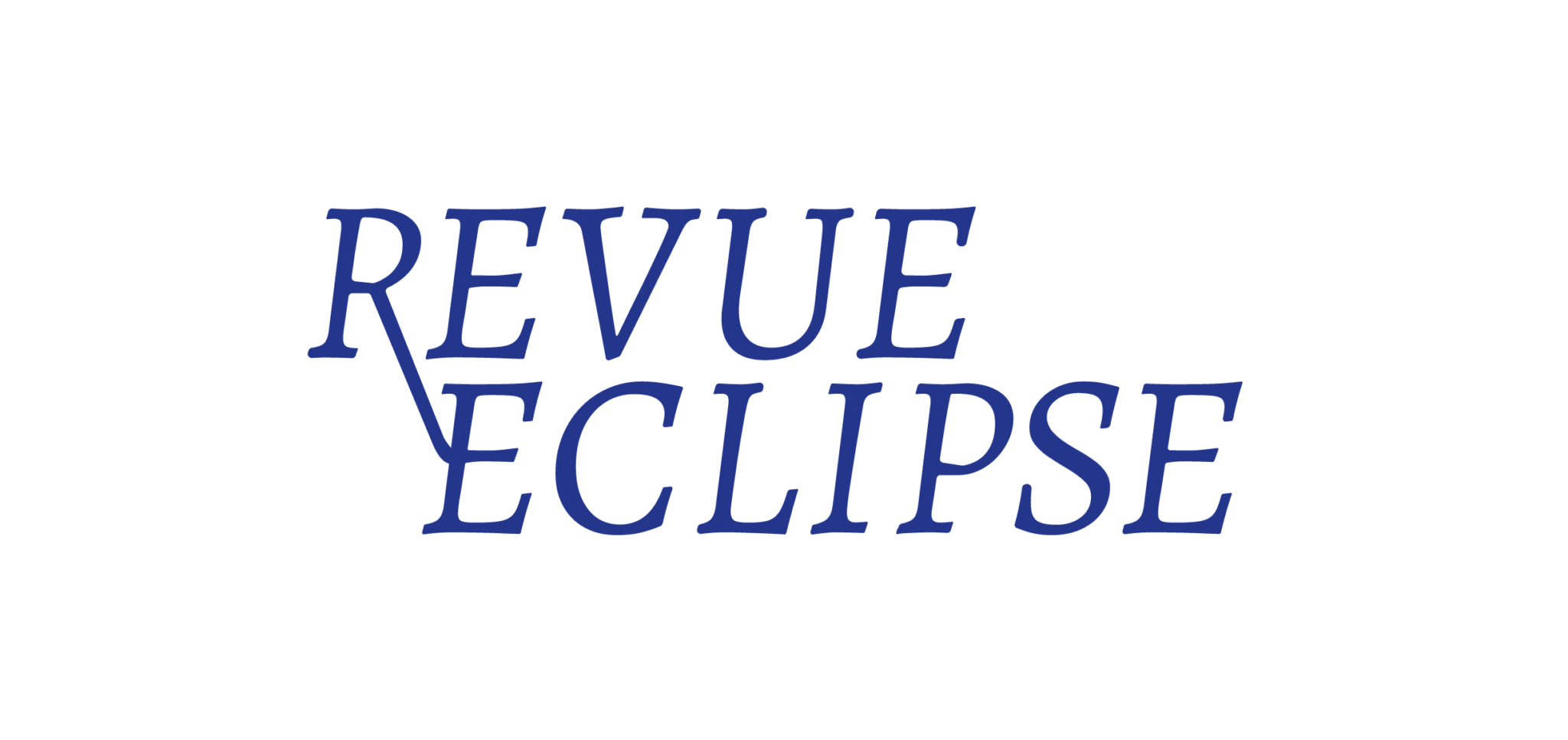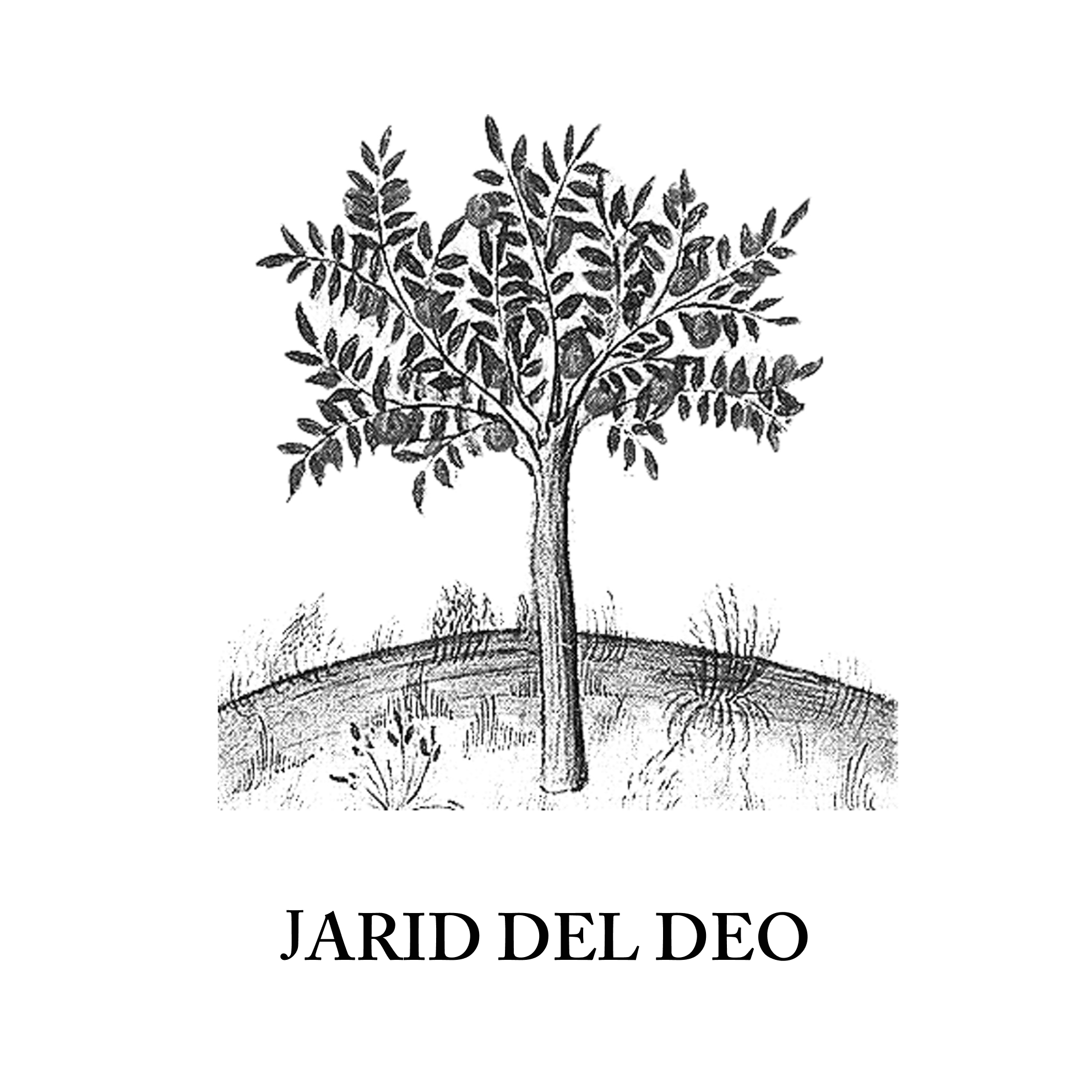
Jarid del Deo

1. Could you tell us more about artists that inspired your artistic path ?
That’s hard to answer because there are so many artists that I look at and think about and they’ve had varying degrees and different ways of influencing me. Here are a few off the top of my head; Louisa Matthiasdottir, Aubrey Levinthal, Lois Dodd, Hilary Irons, Whiting Tennis, Susan Rothenberg, Charity Baker, David Hockney, Yoko Ono, Lisa Sanditz, Roger Raveel, Dawn Cerny, Craigie Aitchison.
2. How does the idea of a painting come to your mind ?
Well, usually I’ll see something when I’m walking or driving around and I’ll want to paint it. I might start painting it the way it appears but then I start to add things or take things away. The painting, as an object, is the most important thing and decisions are in service of the painting itself, not the subject. Being faithful to the appearance of whatever I am painting is only relevant in terms of how it makes me feel. At this step in the process, I am painting intuitively and only referring to the subject as needed to keep the painted image rooted in some kind of recognizable reality.
3. The first impression that we had while discovering your works was a fascinating triviality in the themes depicted; it’s very simple and ordinary, and, yet, it’s endearing. Could you tell us more about these touching vibrations in your artworks?
Thank you for picking up on this. If I’m understanding this question correctly, you’re wondering “why the prosaic imagery?”.
I suppose what makes something seem common or novel just depends on the amount of exposure we have to that thing. If what you’re dealing with is changes in light or shapes of shadows or clouds or waves, etc, then you can find excitement and newness even in the most familiar views. I seek out those familiar things to paint because it allows me to heighten that dynamic viewing experience with color and composition and not have that opportunity over-shadowed by fanciful subject matter.
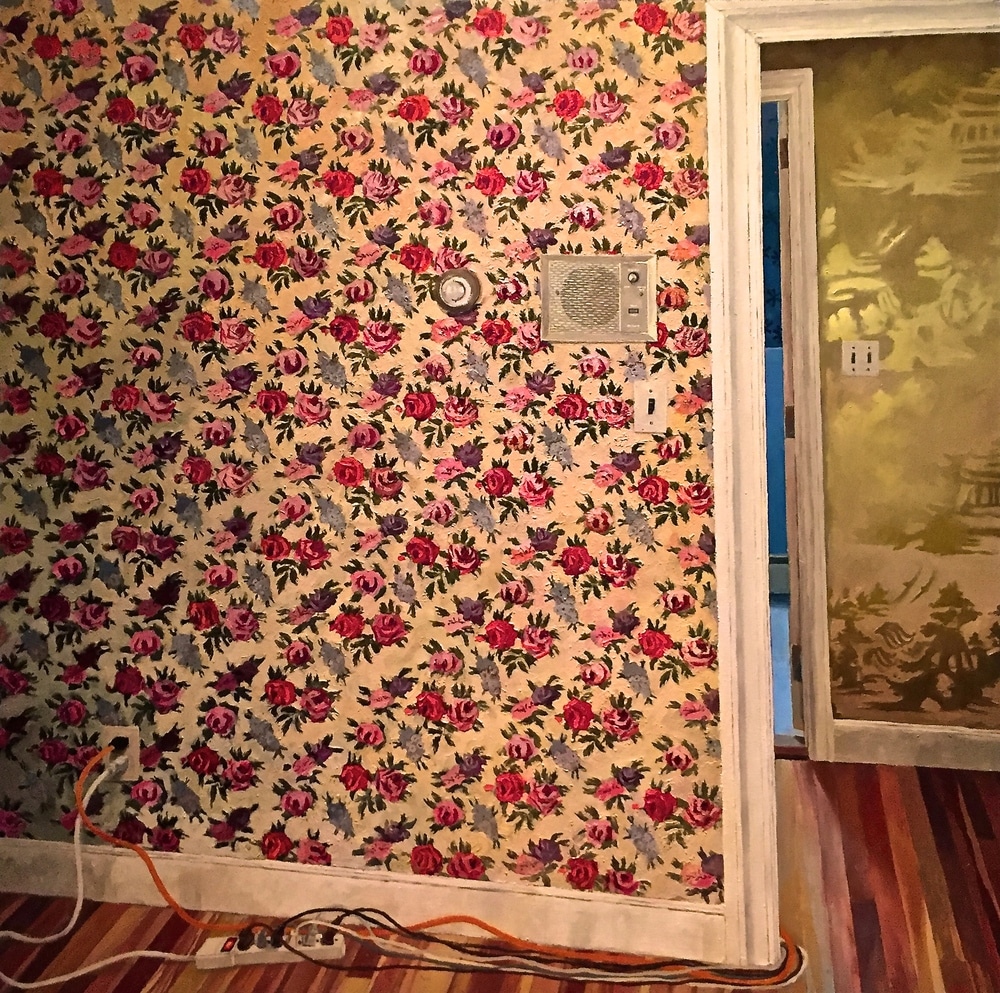
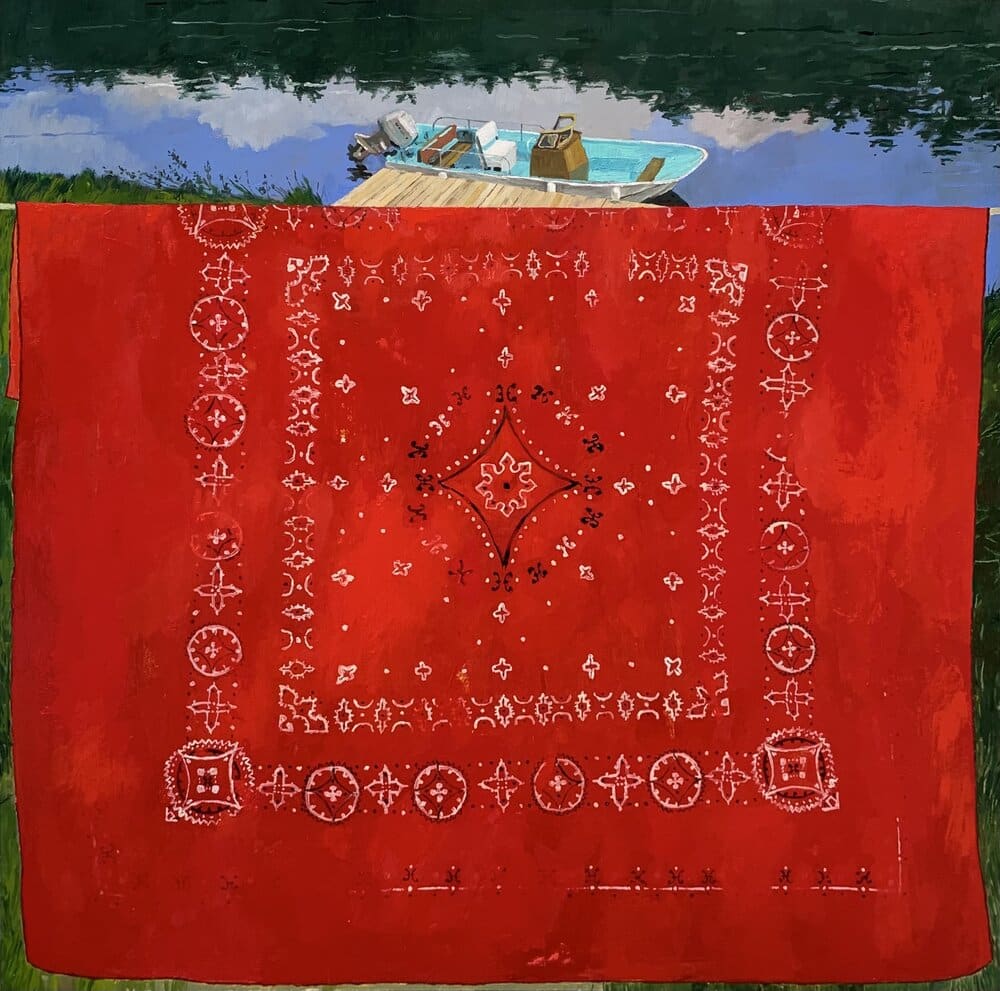
4. The theme of this season in the Revue Eclipse is the Assignificant, which we defined as an appeal for the ordinary, the simple, all these things that we live and see daily; do you feel a certain attraction to assignificant moments and themes, and if so, why ?
I wouldn’t say I have an unusual attraction to ordinary moments. As I mentioned in the previous question, the ordinary serves as a practical device for implementing formal elements. I do happen to be a very detail oriented person and I think I notice a lot in my environment. I may be extra sensitive to the visible world.
5. We often notice inclusions of another plane / cover / curtain / which cuts out the composition or brings a more abstract dimension to the paintings. Thus, The foreground becomes almost an abstract painting, and a way to play with decorative motifs; could you tell us more about these foregrounds, like the ones in the two paintings attached ?
Yes, it does all those things you mentioned. I’m interested in the various ways one can view a painting. It’s an object, it’s a plane, it’s a window, portal, etc. By placing a two-dimensional object in the foreground, I can play with the idea that the viewer is looking at a two-dimensional space that has been manipulated to look like it opens up or recedes. I think of the red bandanna painting as a landscape painting but the bandanna acts as a visual foil pushing the “subject” up into the top fraction of the picture. I like lop-sided spacial ratios. I suppose you could also see the bandanna as the subject. In which case, the painting is a still life.
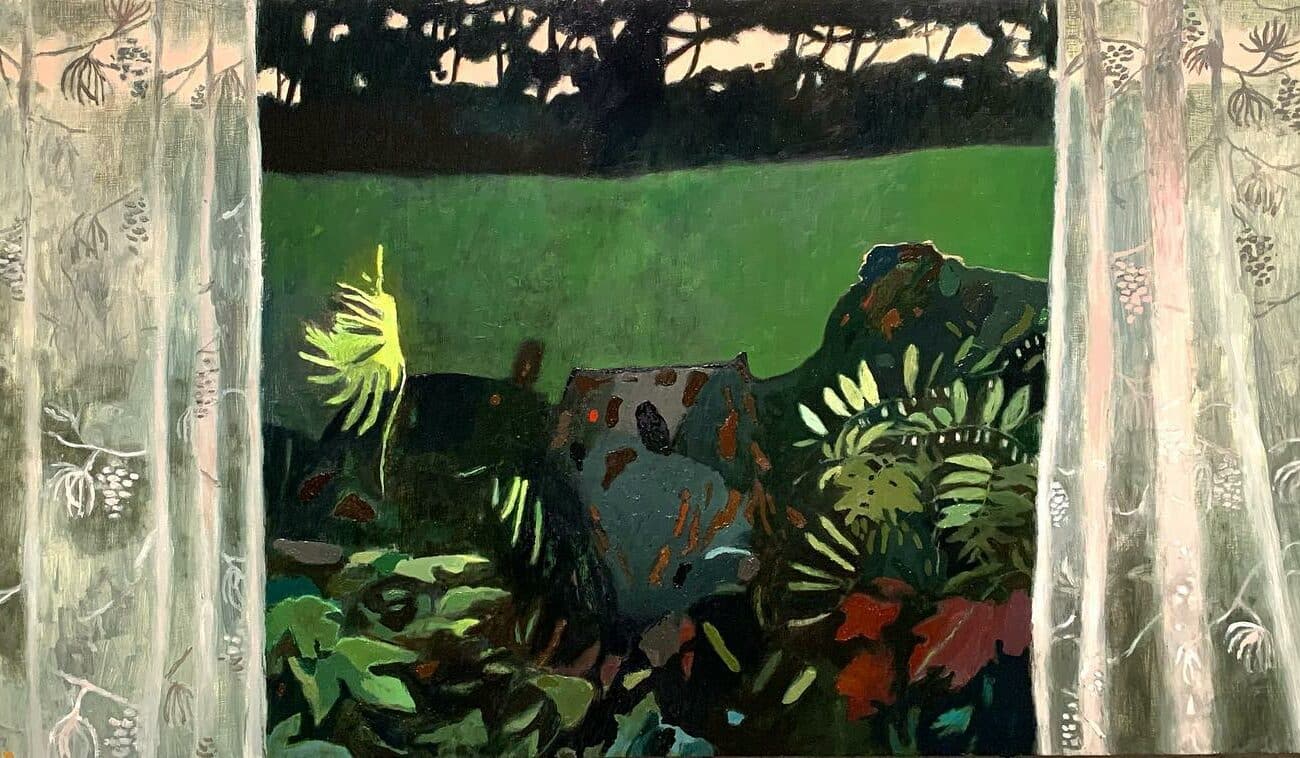
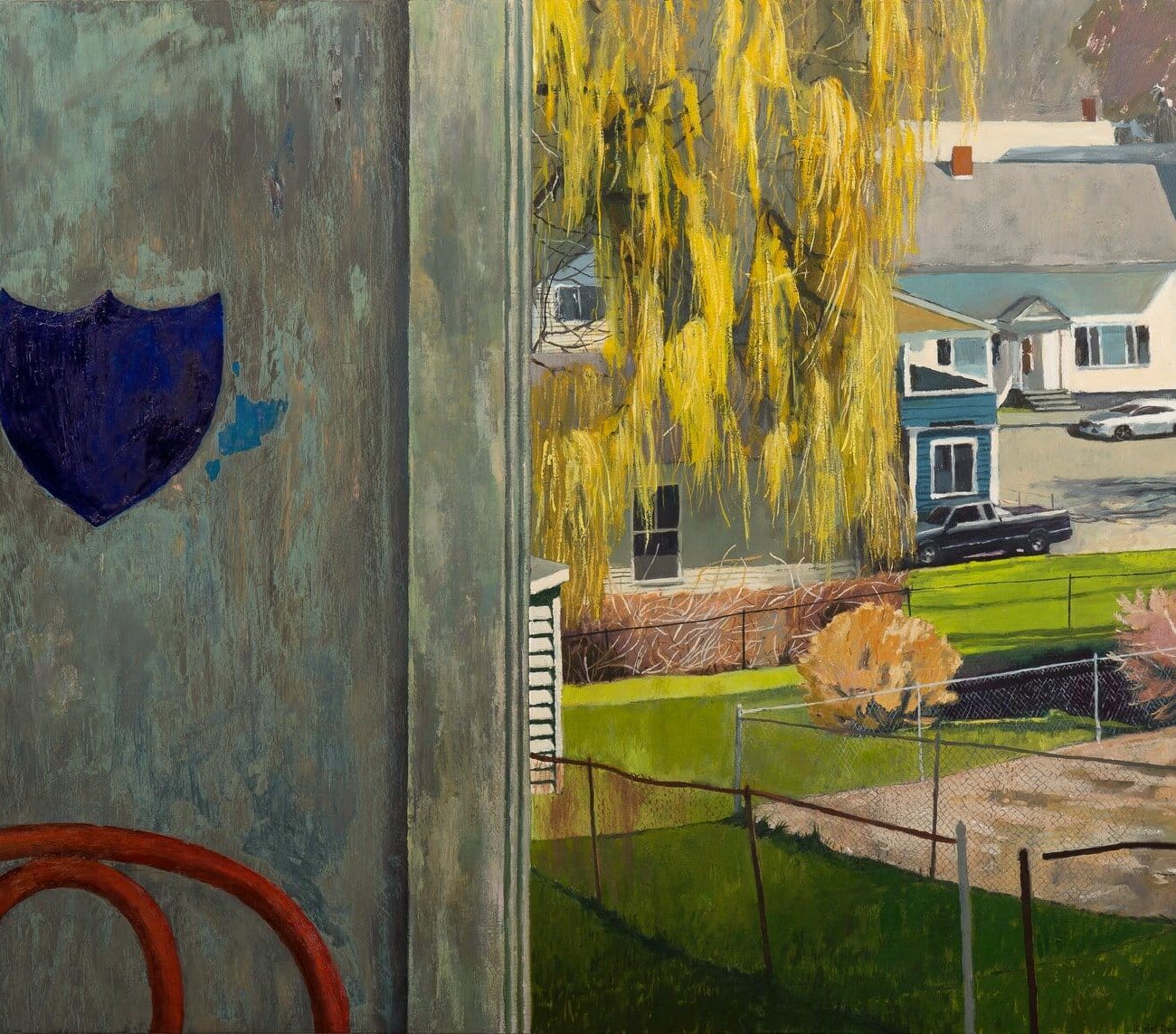
6. We often find the composition framed by the presence of curtains which suggests a human presence. The natural landscapes depicted are also rarely free of elements suggesting human activity, such as the field and the barriers. what interests you in this cohabitation between human structures and natural elements in your landscapes ?
I’m glad you noticed this and brought it up. Yes, I paint a lot of landscapes but they always seem to imply the presence of people. Or, maybe, the human experience. My interest in the landscape has a lot to do with how I fit into it both physically and spiritually. I’m not so much interested in documenting nature but rather exploring the idea that we are simultaneously part of and observers of it.
7. While working on this interview, we discovered you were a professional musician before being a painter. We were not surprised as your painting has a musical, smooth, laid-back detached aspect, while it’s also very mastered; is this mellow atmosphere willingly created, or is it just an unconscious result ?
I think it’s an unconscious result.
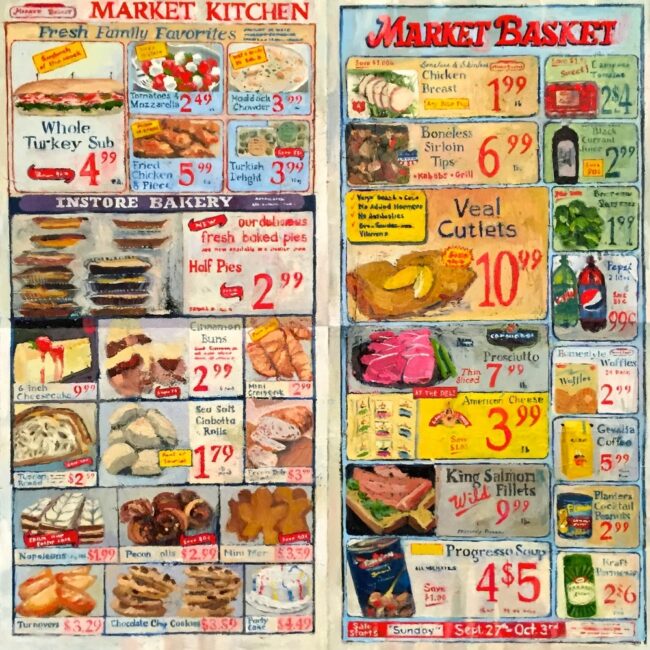
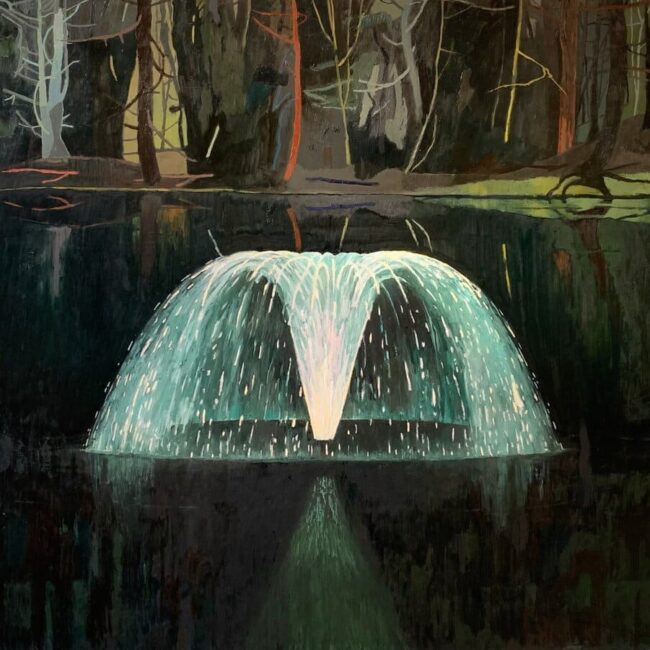
8. We appreciate your compositions but also your singular chromatic palette; could you tell us more about the way you conceive your colors ?
As important as color is to me, I don’t have a lot to say about it. That may be because I don’t have the vocabulary to articulate my thoughts. I do spend a lot of time working out color relationships within a painting. I do this right on the painting itself. I don’t do much premixing on the palette. I don’t make test strips. I rarely do studies. My process is to just keep trying color combinations until it looks good to me. It’s not a process of economy but I eventually get the desired effect.
9. Tell us about a typical day of your work ?
I’m not an early morning person. I sleep as late as I want then drink coffee and read the newspaper for a couple hours. I do treat my studio time like a job though and once I punch in, I work an eight hour day. I start by looking at the previous day’s work and think about what today’s first move will be. It takes me a while to get ramped up but once I’m painting, I get very consumed. I usually listen to music or a podcast while I’m working. I take a lot of short breaks but I try not to leave the studio or I risk losing momentum. I always try to leave a painting in a good state at the end of the day so that when I return I’m not disappointed. I take a photo with my phone at the end of every painting session. That way when I’m at home in the evening I can look at it again, away from the studio.
10. Do you have any future or actual projects to share with us?
I currently have an online solo show at Nancy Margolis Gallery nancymargolisgallery.com. I also just started taking ceramics classes and I’m very excited about that. I made a combination coffee cup / ashtray in my first class.
